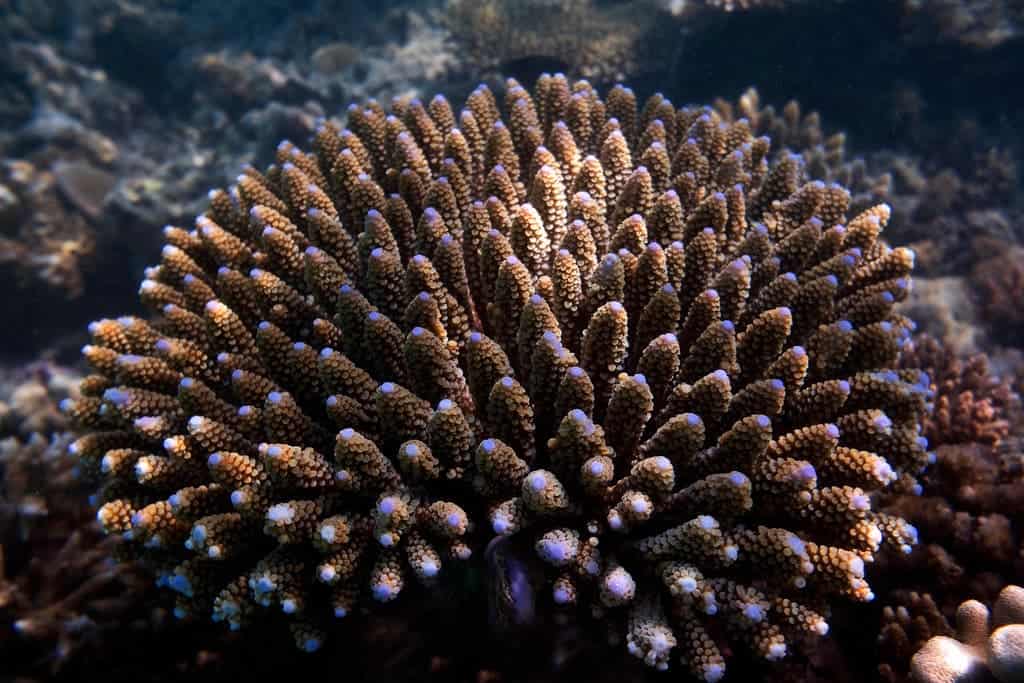Table corals could hold the key to saving the Earth’s coral reefs, according to new research.
By now, you probably all know that coral reefs around the world are struggling. Waters that are too warm and too acidic are causing corals to bleach — to eject their symbiotic algae under stress. If this happens enough times in rapid succession, reefs can see massive damage and coral death.

We’ve been trying to find a solution to this problem for quite a while. New research may have found something that will help us, in the form of the table coral Acropora. These can regenerate habitats in reefs such as the Great Barrier Reef faster than any other coral type.
Reef Relief
“Table corals are incredibly fast-growing. Habitats in exposed reef slopes recover from disturbances at a rate 14 times higher — that’s more than two decades faster — when table corals are abundant,” says Dr. Juan Carlos Ortiz at the Australian Institute of Marine Science (AIMS), lead author of the paper.
“Their large, flat, plate-like shape provides vital protection for large fish in shallow reef areas and serves as a shelter for small fishes, with some species almost entirely dependent on table corals. Even after death, these corals provide value, as their skeletons are the preferred place for young corals of all types to settle.”
Table corals, also known as plate corals, are generally found in the upper slopes of reefs (where their shape is adapted to withstand wave motions). They’re also sometimes encountered in the mid-shelf area and offshore reefs in the Great Barrier Reef. According to the study, these corals have a unique combination of characteristics. Table corals provide valuable ecological functions, are among the most sensitive coral types, and their role is threatened by a low diversity of species, the authors report.
Overall, however, the paper explains, the Great Barrier Reef would recover significantly slower if table corals declined or disappeared from the area.
Because of this, the authors suggest that protecting these corals should become an additional point of focus for ecosystem management. Selecting particular coral types based on what ecosystem function they perform, rather than (just) how endangered a particular species is, would help promote the health of ecosystems in the Great Barrier Reef, they add.
“Table corals are still frequently seen on outer reefs, but their presence shouldn’t be taken for granted as they are vulnerable to combined impacts,” said Dr. Rachel Pears, Great Barrier Reef Marine Park Authority’s Assistant Director, and study co-author. “These corals do not handle intensifying thermal stress well, are easily killed by anchor damage, highly susceptible to diseases, and are the preferred meal for crown-of-thorns starfish.
“The good news is there are tangible actions we can take to protect these corals such as targeted crown-of-thorns starfish control and anchoring restrictions.”
Still, while they can help, table corals can’t save reefs by themselves. This is because while they do perform important ecosystem functions, they don’t necessarily improve the reef’s biodiversity levels significantly, due to the low number of species in this class.
All of this being said, the real threat facing coral reefs is climate change. While fostering biodiversity and making sure table corals get to do their job will help, the root of the issue is the level of emissions we’re outputting into the ocean and the atmosphere. In order to fix it, we’ll all have to work together to significantly reduce these.
The paper “Important ecosystem function, low redundancy and high vulnerability: The trifecta argument for protecting the Great Barrier Reef’s tabular Acropora” has been published in the journal Conservation Letters.


